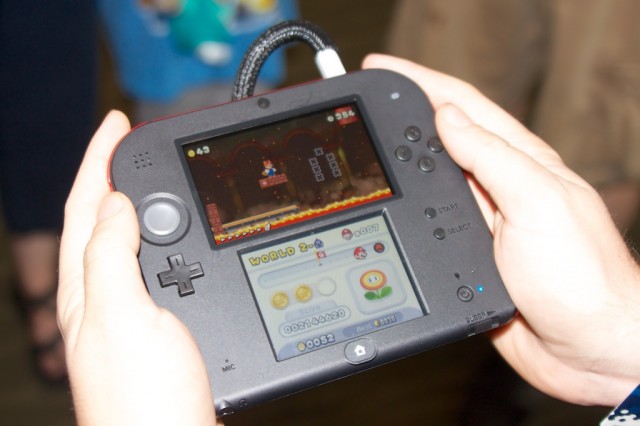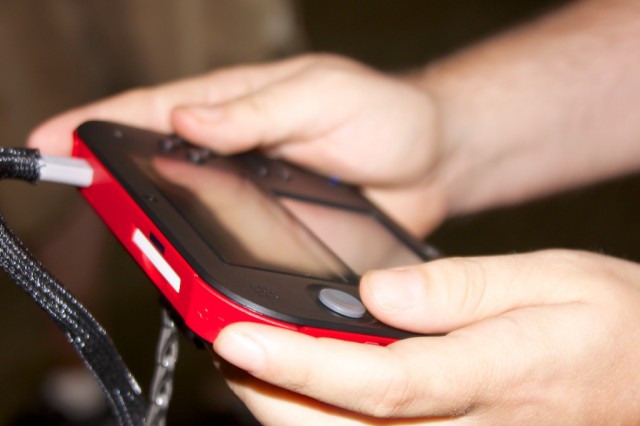
Less than a week after Nintendo first unveiled the 2DS and just over a month before the new system is due to be on sale in North America, Nintendo offered up the final retail build of the system for hands-on testing to attendees at Seattle's Penny Arcade Expo this weekend. After spending a few minutes putting the system through its paces, I'd summarize my initial impressions of the new redesign as "surprisingly comfortable" especially given how unorthodox it looks in photos.
The first thing that struck me about the 2DS was how small it is. Even though the system is roughly the same size as a normal 3DS (when the hinge is opened), I'm used to the spacious screens on the excellent 3DS XL. The screens on the 2DS are perfectly usable, but it's a bit of a step backward for anyone used to doing portable gaming on the bigger XL screen (or a tablet).

The small size makes it relatively easy to wrap adult-sized hands around the large, rounded shoulder buttons (which are even bigger than those on the XL) while still partially cradling the (somewhat pointy) bottom corners of the system with the palms. My thumbs fell onto the higher analog slide pad and face buttons naturally, though things felt a little more stretched when I tried to use the lower d-pad and the left shoulder button at the same time.
It was a bit hard to get a full feel for the weight and balance of the system, since the demo units were attached to heavy battery/security blocks on the back (which were, in turn, physically attached to a Nintendo attendant via an elaborate cable). Still, I didn't feel the need to squeeze the system in from the sides to support it as I worried I would when I first saw pictures. When playing standing up, I mainly looked down and supported the system with my fingers on the back. This might be more of an issue when sitting down, but the system seems to have a natural top-heavy tilt that will help it rest on unused fingers.


A few more incidental 2DS tidbits I didn't notice until I examined it up close:
- The top screen seems a bit more sunken in than on other DS/3DS systems, and it looks like it's protected by a thicker layer of plastic. I asked if this had anything to do with the reported single-screen internals for the system, but the attendant didn't have any insider knowledge about the system's guts.
- The start and select buttons have been moved from below the bottom screen to the right side of the system. This should avoid some confusion with the Home button, which is now a large, friendly, word-free icon on the bottom of the system.
- The face buttons and d-pad on the 2DS aren't marked with colored letters or markings as they are on the 3DS and XL. Instead, each button is marked with a recessed carving of the button name, making the front face of the system an almost completely uniform black slate.
- The volume slider on the left side of the system is more recessed and takes more force to move than on the other DS systems, which should lead to fewer accidental volume adjustments from sliding hands.
- The AC adapter slot is at the top of the system, which is nice for players who like to rest the charging system on their chest when lying down (this is a major annoyance on the PlayStation Vita for me).
- The 2DS doesn't have a switch to toggle the wireless mode like the 3DS. Instead, you have to go into settings to turn the feature off. There is a handy switch that quickly puts the system into sleep mode though.
- The cartridge slot atop the system is shifted a bit left of the center line, which I'm pretty sure is a first for a Nintendo portable.
reader comments
39